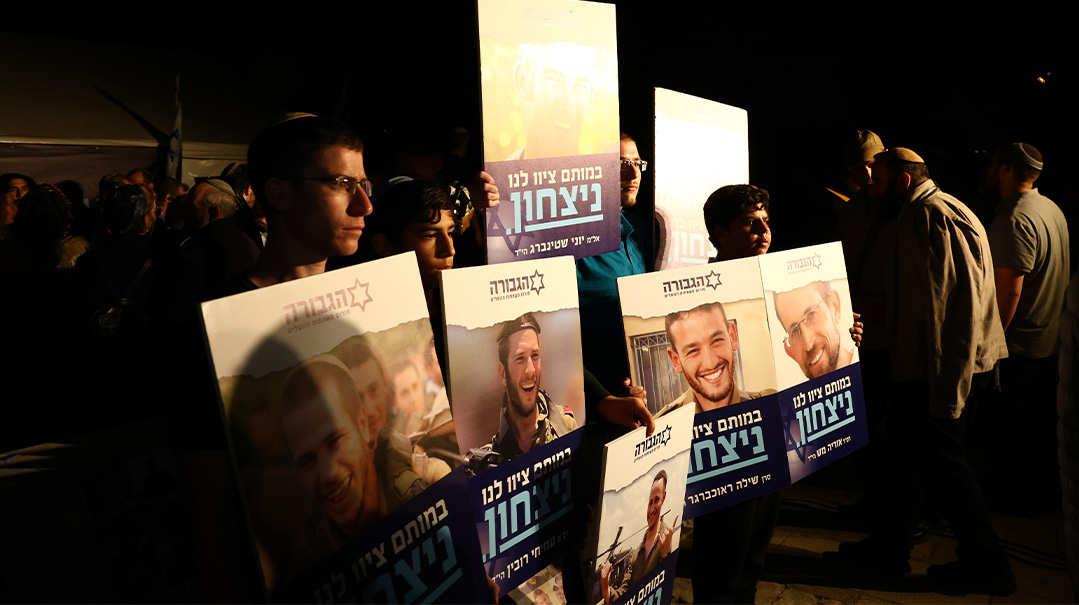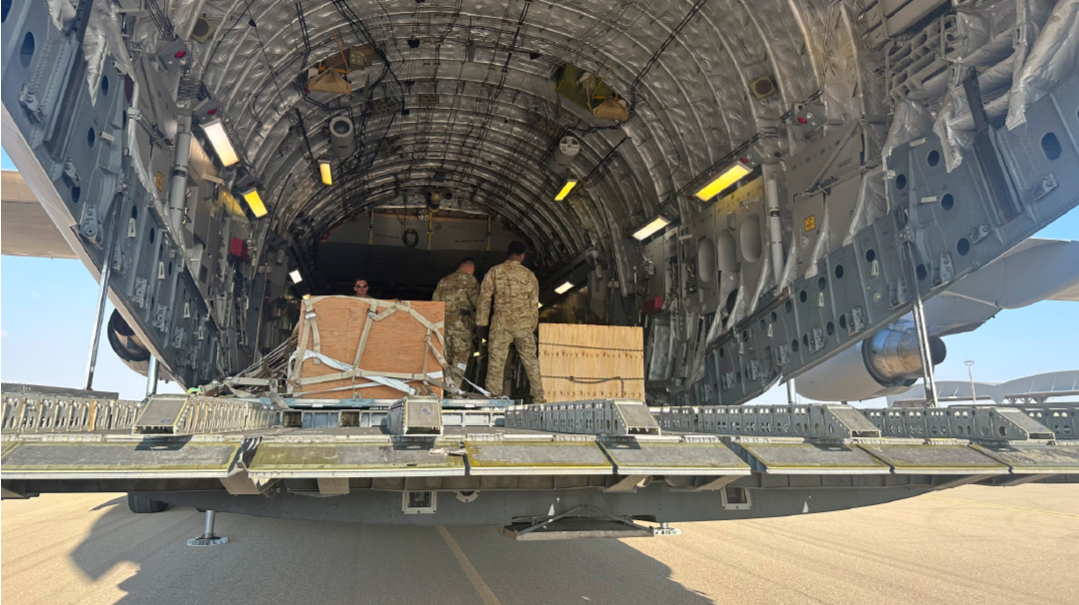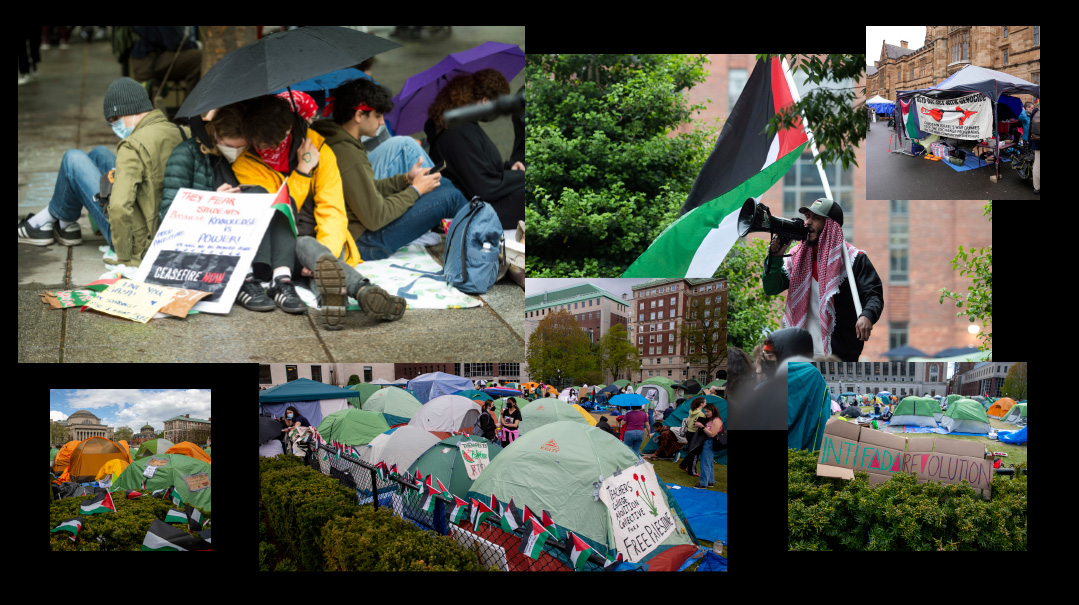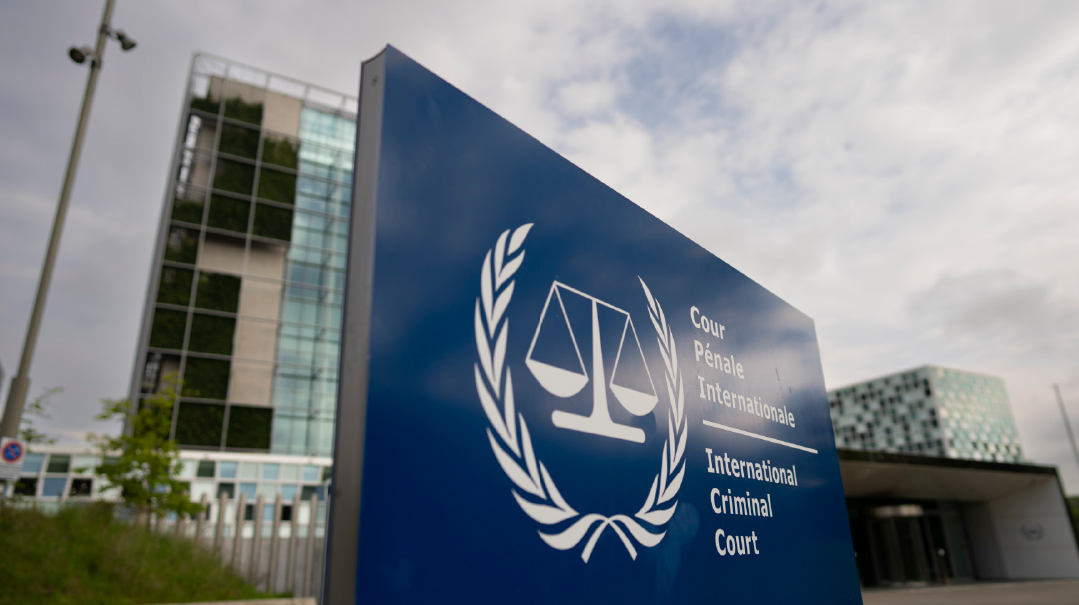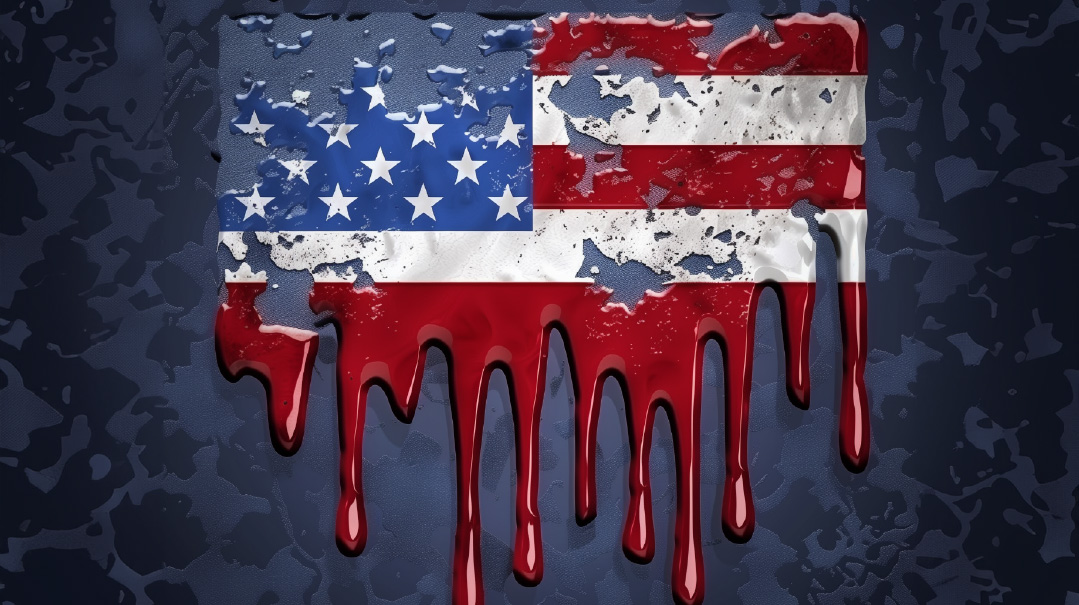From Joy to Grief: Aftershocks in Karlin
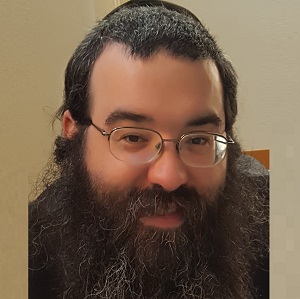
In a matter of seconds, the greatest simchah in the chassidus turned into unfathomable devastation
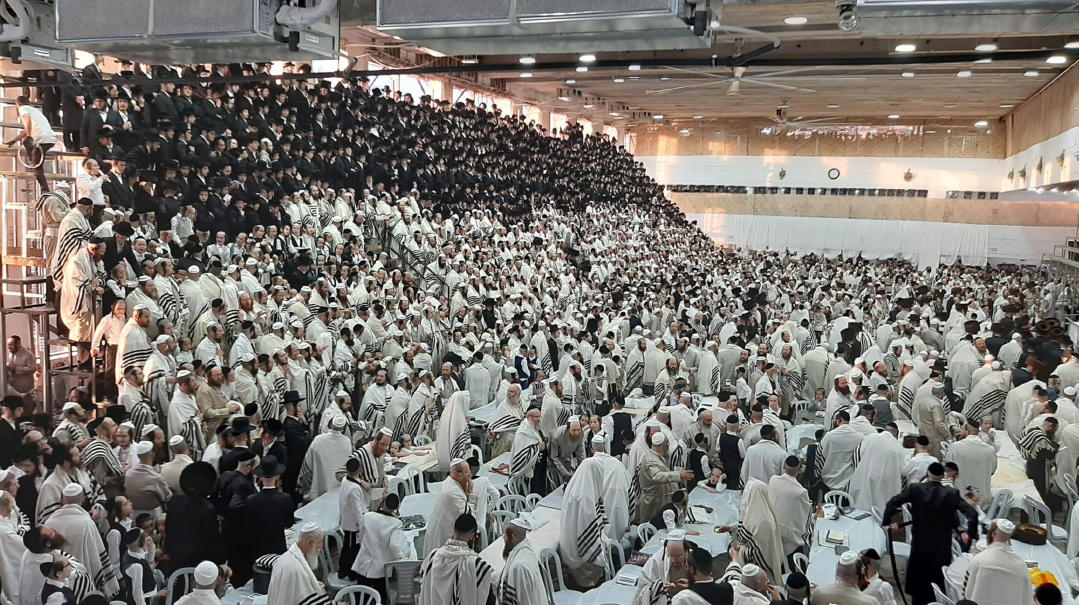
The tish that took place right before the start of Shavuos was supposed to be the climax of Karlin-Stolin’s exponential growth in both Eretz Yisrael and abroad — a chanukas habayis of the mammoth shul they’ve been talking about for decades that could comfortably accommodate the thousands who regularly flock to the Rebbe in the Jerusalem suburb of Givat Ze'ev. With COVID on the wane, it was the first time the bulk of the chassidus gathered together without face masks since Purim of the previous year.
The catastrophic tragedy that followed, when several rows of parentches — the ubiquitous bleachers that have been a staple of chassidic tishen for generations — collapsed, sending hundreds of bochurim and young men plummeting, and shattering the entire kehillah.
The tragedy has led many chassidic groups to take another look at the safety of their parentches. The Gerrer Rebbe ordered the parentches in his beis medrash to be chopped up and taken out. The Sanzer Rebbe ordered the removal of wooden beams that had long hung from the ceiling of his shul. And the Belzer Rebbe ordered the hallways to be kept clear from now on.
To enable Karliners and others to participate in the Erev Shavuos simchah, a live hookup was arranged. I logged on shortly before noontime in New York, just before the scheduled 7:00 p.m. event. It was mere minutes after the festive kvias mezuzah, as the music switched to a fast-paced song, when horror struck right before our eyes — an entire section of bleachers designated for bochurim abruptly disappeared, dropping 15 feet and taking an estimated 750 people along with them.
The horrifying episode took two lives, hospitalized nearly 200, and lightly wounded hundreds more, likely the largest civilian disaster in Israel’s history in terms of injuries. Eight of the most severely injured were on the walkway beneath the parentches, bearing the brunt of the 75 tons of humanity and mix of metal rods and wooden planks. Over 500 people bentshed gomel the next morning.
The past week has been a somber and despondent one for Stoliner chassidim around the globe. There have been tefillos for dozens of injured young men, as well as a rapidly organized chesed program of hospital visits, medical referrals, and a drive to replace hundreds of lost glasses and hats.
The tragedy unfolded as Karlin-Stolin was at perhaps its most gratifying moment. The shul used for occasions of large crowds has always been the central beis medrash in Jerusalem, but that was built in the 1950s and continually expanded. Plans for a grand new shul have been around for 30 years, but were only finalized in the last few years, as the huge shul came into reality — 27,000 square feet, with 16 levels of bleachers.
Throughout the past year, the chassidim, at the instructions of the Rebbe who is known for his meticulousness when it comes to safety, adhered strictly to COVID rules and emerged unscathed from the yearlong pandemic. Even when the Meron tragedy happened on Lag B’omer, none of the 45 victims were from Karlin. And now, for the first time, there was a new shul. Optimism was in the air.
In the wake of Meron, priority was placed on safety ahead of the inauguration. Two million shekels were invested in security, a group of 40 people were named to ensure people’s safety, and the traditional pushing that goes on in a chassidishe court was banned, with order strictly enforced.
“This is a new era in Karlin,” Rav Yochonon Bernstein, one of those entrusted with leading the safety protocols, told the crowd ahead of the event on Erev Shavuos. “There will be no shoving. Safety is the first priority.”
The bleachers fell about 20 minutes later. My brother Shaya Donn, a Beitar resident who was there for Yom Tov, told me that he was standing near them when someone asked, “Don’t the parentches look a little bent?”
“I looked and saw that it indeed looked strange,” Shaya said. “Then suddenly, they slowly bent further and further back and then boom, they collapsed.”
The first thought that went through everyone’s mind was — Meron is happening again.
“We were just through a difficult year [with COVID],” the Rebbe said in a rare emotion-laden address that night, “and we baruch Hashem emerged passably from it. In Meron, too, our kehillah was not there. But it is obvious that one cannot completely hide — anah mi’panecha evrach — to where can I flee from Your face?”
One elder chassid told me mournfully over Shabbos, “I can now understand how it felt when Nadav and Avihu were niftar in the Mishkan.”
Still, the extensive preparations that went into the safety precautions showed. Within a second of the accident, Yanky Goldhaber, the other safety coordinator, was on the microphone, ordering an evacuation so emergency responders could work on the wounded. There was ample space to leave through the four cavernous exits, and barricades purchased for just such an eventuality were set up. Wooden tables were transformed into stretchers for the wounded, who were buckled in by the wide Yerushalmi gartels and transported several hundred meters to a crush of ambulances that arrived from all over Jeruslaem.
The fact that the parentches were faulty devastated those in charge, Yossi Rosenbaum, a member of the team, told me.
“The Rebbe was very anxious about safety for the past few days,” Rosenbaum, a member of the security team, told me. “He kept on demanding that we implement the best safety measures possible. He insisted that we put in a sprinkler system, a mic system, bars on the windows, wide exits — you can see that everyone was able to leave efficiently. Unfortunately, we failed on the thing we least expected.”
Rosenbaum said that the first eight rows of parentches were set up and approved by an engineer. Shipment of the eight upper rows, however, were delayed due to a Muslim holiday signaling the end of Ramadan earlier that week. When they arrived, some parts were missing, so they improvised, using other materials in exchange.
In the meantime, the narrow road that was used to seeing dozens of buses and hundreds of cars ferrying chassidim to early morning Selichos or late-night tishen became emblazoned with the red and blue of emergency lights. The street was lined with hundreds of ambulances, a helicopter was hovering above, with an officer blaring on a loudspeaker for everyone to get off the road. People went around asking, “Are you okay? Do you need medical attention?”
Shaya joined fellow chassidim, who worked for hours desperately pulling out hundreds of people from the debris, categorizing the injured based on their wounds. “The first priority was to get them out of the parentches,” he said. “There were people everywhere, leading the evacuation, helping people walk, doing CPR.”
The accident occurred minutes before Yom Tov — barely enough time for anxious parents who watched it in real time to contact their children in Eretz Yisrael and hear that they were safe. I have a son there — I called him and he thankfully returned the call almost immediately. He had arrived in Givat Ze'ev late and there was no room on the bleachers for him. Many parents received texts later from non-Jewish Hatozlah volunteers. Others were not so lucky. A half-dozen members of my shul in Boro Park had children hospitalized.
Minchah, scheduled to take place in the new shul, ended up in a patchwork of dozens of minyanim spread across the road. People then went home in a surreal daze to eat the Yom Tov seudah and regroup for and a night of learning.
“The hardest thing for me,” my brother said, “was to go home, my tallis covered in blood, and make Kiddush and put on a poker face for my kids to show that life goes on. That was very important. Later in shul, people were talking the entire night, getting over the shock, getting over the trauma, comforting each other. That night there were no statuses.”
Therapists and social workers circulated throughout Yom Tov, speaking to people, many of whom were still in a state of shock. I heard from several people of a new activity children have — creating parentches out of Lego and then smashing them to show their younger siblings what they saw.
“I was sitting at the seudah,” one person told me, “when we suddenly heard a crashing sound — we jumped up and saw that the kids made parentches out of Magna-Tiles and then smashed it.”
The injured were transferred to five hospitals, where 43 remain as of this writing. Miracles abounded even among the tears, with two of the severely wounded — they arrived without a pulse — awakening with no apparent long-term damage, said Motti Fried, who runs the Saad V’Marpe organization that aids patents at Shaare Zedek medical center in Jerusalem.
“There is techiyas hameisim in our generation,” Fried said. “When one of the patients came in, we said, ‘He is dead, he has no blood pressure, there’s no chance of reviving him.’ Today, he went home on his own two feet. This is a Baal Shem Tov miracle.”
As the hospital is near the Bayit Vegan neighborhood, a group of Amshinover chassidim whose beis medrash is nearby came to help as soon as they heard, bringing crates of food to the hundreds of chassidim — both patients and family members who’d accompanied them — who’d converged on the hospital as Yom Tov began, and staying around even after Yom Tov to assist the wounded and their families.
“Their first question when they came in was, ‘How can we get a Tikkun Leil Shavuos?’ They didn’t want to drink a cup of water since they hadn’t made Kiddush or davened Maariv,” said one Amshinover. “One bochur was most distraught at the fact that he missed Minchah. I saw yungeleit and bochurim with severe injuries, sitting in wheelchairs or lying on beds as they waited to go into surgery — some with no family members present — holding a Gemara, a Tehillim, a Tikkun.”
The funerals of the two victims — Mordechai Binyamin Rubinstein a”h, 23, who is survived by his young wife and baby daughter, and Meir Gloiberman a”h, who just became bar mitzvah two months ago — took place on Motzaei Yom Tov. Both niftarim davened in the same shul in Beitar.
“The amount of anxiety and depression that people are going through is absolutely crazy,” Shaya says. “I don’t know how we will be able to pull out of it.”— (Originally featured in Mishpacha, Issue 862)
Oops! We could not locate your form.







